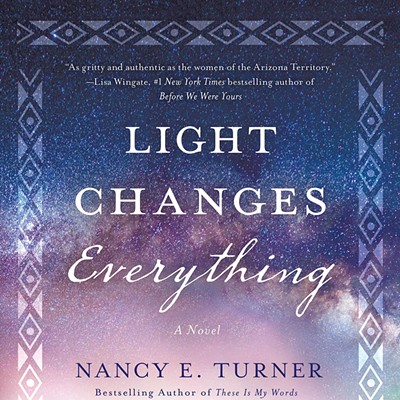THERE EXISTS, IN Sri Lankan tradition, the belief that a sculpture of the Buddha animates when his eyes are painted on. This quickening, spirit-engendering act is the final touch in creating the statue, and only someone anointed--a king, or, preferably, an "artificer," a trained ecclesiastical painter--can perform it. Even then, it's a sacrilege to look into the eyes of the Buddha, so the artificer paints them from over his shoulder, monitoring his progress in a mirror.
An artificer plays a memorable minor role in this beautiful and terrible new novel by Michael Ondaatje. And Ondaatje himself played a bit of an artificer's role in writing the book--painting and animating a reality obliquely, through reflection, truth being painful to gaze upon directly.
Anil's Ghost is Michael Ondaatje's fourth novel, the first since his Booker Prize-winning English Patient, but it reflects his work as a poet. It's graceful, fluid, multi-layered, connotative, ultimately ambiguous. Ostensibly about civil war in Sri Lanka, it also concerns family relations, identity, spirituality, the nature of truth, the nature of remembrance, and the redemptive power of art.
Ondaatje, Sri Lankan-born and a Canadian resident since 1962, chose as his central character a Sri Lankan expatriate--33-year-old forensic anthropologist Anil Tissera, English- and American-educated and gone from the country for 15 years. The story takes place in the early 1990s, in a historically accurate time of tripartite political crisis. In response to the actions of separatist guerillas in the north and anti-government insurgents in the south, the government sent out its own legal and illegal squads. Rampant murders and "disappearances" resulted.
The action opens with Anil arriving on a UN human rights assignment to investigate reports of atrocities. The government assigns her a contact and partner, archeologist Sarath Diyasena, and he explains to her that the disappearances and murders could be traced to any of the three warring factions. When a dead body shows up in a government-protected area, though, Anil thinks she has her case against the government. She just needs to determine where it died, where it came from, and who it was.
In the course of her investigation, Anil meets Sarath's surgeon brother Gamini; Gunesena, a truck driver "crucified" with bridge nails on the asphalt of a highway; Palipana, a discredited archeologist living an ascetic's life in a former monks' compound; and Ananda, a drunken pit-mine worker trained as an artificer. Anil also revisits old relationships--mostly in her mind.
While the plot is moved by Anil's inquiry and its suspense derives from the threat of government reaction, her character serves to catalyze issues of family and identity. She brings together emotionally estranged brothers Sarath and Gamini, for example, whose relationship could well represent the complexity of Sri Lankan civil unrest.
"We are full of anarchy," Ondaatje has Anil muse. "[I]f I meet a Sri Lankan elsewhere in the world...each of us knows all hell could break loose. What is that quality in us? What causes us to cause our own rain and smoke?"
There is political outrage inherent in Anil's Ghost, but no simplistic denunciation or accusation. In her quest to track down the story of her corpse, Anil repeats a lesson taught her by a professor regarding human rights work in Kurdistan: "One village can speak for many villages. One victim can speak for many victims." That Anil has also participated in human rights investigations in Guatemala and China, and refers to rights violations in such locations as the Congo, suggests that one country might speak for many countries as well.
Just as political positions are blurred in this novel, so are notions of truth. Early on, Anil realizes that the factual certainties she'd come to depend upon in the West don't exist in the same way in the East. Fear contaminates truth, and renders it slippery and evasive. "Truth," she observes, "bounces between gossip and vengeance.... Information was made public with diversions and subtexts--as if the truth would not be of interest when given directly, without waltzing backwards."
One appealing character in this work, Palipana, allows Ondaatje to toy with what's true. Long a respected epigraphist (the country's best archaeological theorist), exacting, and the demanding teacher of many (including Sarath), Palipana had perpetrated a great fraud on the scientific community. Familiar with languages, steeped in texts, intimate with hieroglyphics, Palipana had simply made links and speculated on facts and created a new mythology of his own. He applied imagination to fact.
Palipana leads Anil and Sarath to Ondaatje's best secondary character: Ananda the artificer. In Ananda are embodied the tragedies of Sri Lanka. An artist entrusted with historical and spiritual secrets--artificers are adorned and bejeweled for the occasion of bringing sight and insight to the Buddha--he has been broken by the "disappearance" of his young wife, and he's been reduced to the slogging work of a gem-pit miner, work done by candlelight crouching in tiny mud tunnels. If any character deserves redemption by art, it's this one.
Anil's Ghost is not a mindless read. It spins an extraordinary setting and premise, complex and provocative. If it fails to tie up all issues and elements, it's done no more than reflect the ambiguity of social, spiritual and political realities. If it doesn't explain all it exposes, it's nonetheless a remarkable offering of eyes for the Buddha.








